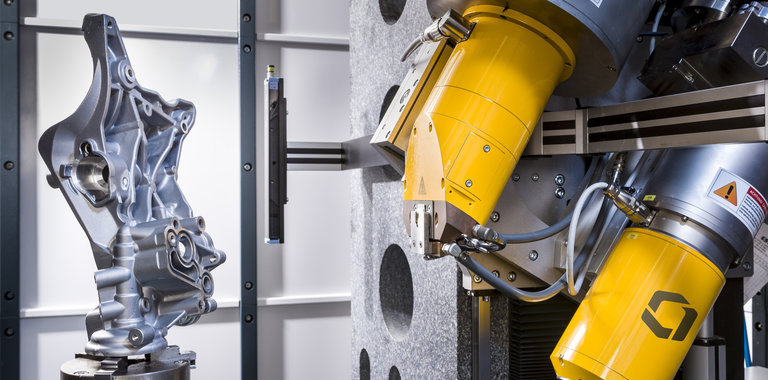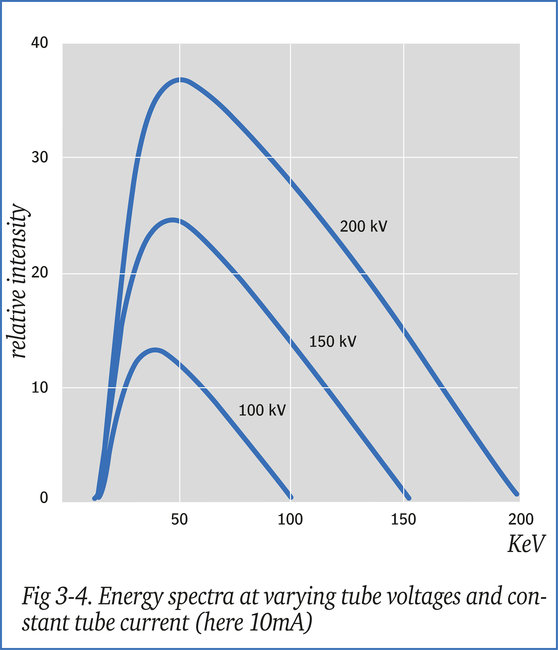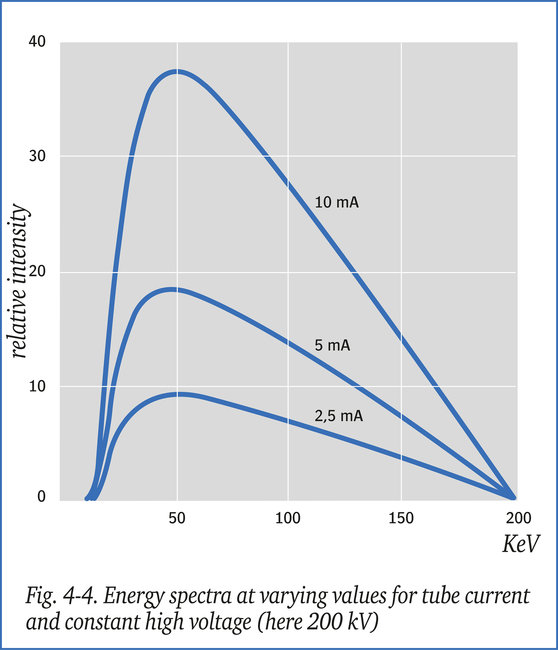
What is the relationship between tube voltage and tube current?
In this article:
- Tube voltage (kV) determines the energy spectrum of X-rays, directly influencing the hardness and penetrating power of the radiation used in industrial radiography.
- Tube current (mA) controls the intensity of the X-ray beam, meaning the number of photons produced, without altering the energy or hardness of the radiation.
- Increasing tube voltage shifts the spectrum toward higher energies, producing harder radiation, while increasing tube current only raises the overall intensity.
- Constant vs. pulsating voltage sources affect the spectral output; constant voltage yields more consistent and harder radiation compared to pulsating sources at the same nominal kV.
- Calibration challenges arise due to variations in tube design and voltage characteristics, making it essential to use specific exposure charts tailored to each X-ray system.
The voltage across the X-ray tube determines the energy spectrum and so the hardness of the radiation, see figure 3-4. The intensity is proportional to the tube current, see figure 4-4. This graph shows that, contrary to a change in tube voltage, a change in tube current does not shift the spectrum (in other words: the hardness does not change).
The energy spectrum is also influenced by the characteristics of the high voltage applied to the tube. When the spectrum of one X-ray tube on constant voltage is compared with that of another with a current of pulsating voltage, of the same kV value, both spectra will be slightly different. With a current of pulsating voltage there are, during each cycle, moments of relatively low voltage, during which there will be a greater proportion of “soft” X- rays, with their side-effects. This means that a set working on a constant voltage will provide a higher intensity of hard radiation than one on a pulsating voltage; although both working at the same nominal kV value. However, even identical X-ray tubes may also show differences in generated energy. The energy generated by one 200 kV X-ray tube will not be true identical to the energy generated by another X-ray tube with the same applied voltage, not even if they are the same type of tube. This behaviour impedes calibration in kV of X-ray sets. Another reason why it is hard to cali- brate an X-ray tube within a small tolerance band is, that the absolute level and wave cha- racteristics of the supplied high voltage are difficult to measure. It follows that it is difficult to standardise and calibrate X-ray equipment as far as spectra and kV-settings is concerned, which precludes the exchange of exposure charts, see in a later section. Each X-ray set therefore requires its own specific exposure chart.


